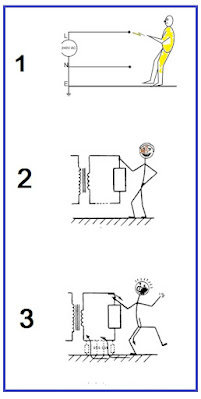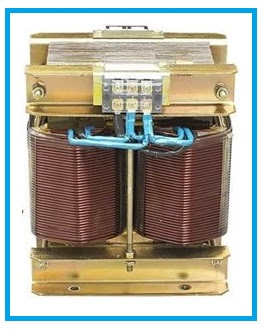Isolation Transformer | What is Isolation Transformer | Uses of Isolation Transformer | UPS Isolation Iransformer | UPS with Isolation Transformer | Purpose of Isolation Transformer
An isolation transformer is a type of transformer commonly used in electrical systems to separate two circuits electrically while allowing them to share a common magnetic field. Unlike regular transformers, which transfer energy from one circuit to another, isolation transformers are designed to provide electrical isolation between the primary and secondary circuits. This technique helps prevent electrical shock and reduce noise and interference in sensitive electronic equipment, as well as improve safety and protection for both the equipment and personnel. In this article, we will explore the working principle, benefits, and applications of isolation transformers.
Applications:
Isolation transformers are commonly used in electronic equipment, where they serve to provide electrical isolation between different parts of the circuit. They are also used in medical equipment, where electrical isolation is critical to ensure patient safety.
Case-1
Presently you see the image In the event that 1. At the point when the man contacts the live terminal of the source, then the spillage flow will course through the human body to ground and the man get shock in view of one terminal is as of now is associated with ground.
Case-2
Presently you see the second picture the power source is associated through a isolation transformer. Presently a similar man contacts the optional terminal of the detachment transformer implies, he don't get shock. Since there is no way for lekage current stream commonly, the ground reference has taken out totally.
Case-3
Presently You see the third picture: In the chart the return way is displayed as either capacitive or direct. In the event that the coupling is capacitive, you might feel a "tickle" or to some degree gentle "nibble" from the live guide. In the event that the other guide is grounded, you are back to the first transformer less circumstance. (Capacitive coupling might happen when a machine body is associated with a guide however there is no immediate association from body to ground. The body to ground closeness shapes a capacitor.
Rating:
The rating of an isolation transformer is determined by the maximum voltage and current that it can handle. The voltage rating is typically between 120 and 240 volts, and the current rating is usually between 1 and 10 amps.
Example
Example of the use of an isolation transformer is in electronic equipment such as audio amplifiers. In audio equipment, an isolation transformer can be used to prevent ground loops, which occur when there are multiple ground paths between different components in the audio system. Ground loops can cause unwanted hum and noise in the audio signal, and can also be a safety hazard. By using an isolation transformer, the audio signal is completely isolated from the ground, which eliminates ground loops and improves the quality of the audio signal.
Another example of the use of an isolation transformer is in medical equipment such as electrocardiogram (ECG) machines. In medical equipment, electrical isolation is critical to ensure patient safety, as it helps to prevent the transfer of electrical energy between different parts of the machine and the patient. By using an isolation transformer, the electrical energy in the primary circuit is completely isolated from the secondary circuit, which helps to prevent electrical shock and other hazards.
Conclusion
In summary, the purpose of an isolation transformer is to provide electrical isolation between two circuits, which can be used to eliminate ground loops in audio equipment, improve the quality of the audio signal, and ensure patient safety in medical equipment.
UPS with Isolation Transformer
UPS (Uninterruptible Power Supply) systems with built-in isolation transformers offer a higher level of protection and reliability for sensitive electronic equipment. These systems use an isolation transformer to provide electrical isolation between the input power source and the output power to the electronic equipment.
The isolation transformer serves two primary functions in an UPS system. Firstly, it provides electrical isolation between the input power source and the output power to the electronic equipment, which helps to protect the equipment from electrical interference, ground loops, and other electrical problems. Secondly, it helps to protect the electronic equipment from voltage surges and other power quality issues that can occur during power outages or other disruptions to the power supply.
UPS systems with isolation transformers can be particularly beneficial for critical electronic equipment, such as servers, data centers, medical equipment, and industrial control systems. These systems can help to ensure that the equipment remains safe and functional during power outages or other electrical disturbances, minimizing downtime and preventing damage to the equipment.
When selecting an UPS system with an isolation transformer, it is important to consider the power capacity and voltage requirements of the electronic equipment that will be connected to the system, as well as the quality and reliability of the UPS system and the isolation transformer itself. It is also important to ensure that the UPS system is properly installed and maintained to ensure maximum protection and reliability.
Frequently Asked Questions (FAQ)
Q: What is transformer isolation?
A: Transformer isolation is a technique used in electrical systems to separate two circuits electrically while allowing them to share a common magnetic field. This is achieved by using an isolation transformer, which is a transformer designed specifically for this purpose.
Q: How does an isolated transformer work?
A: An isolated transformer works by having a primary coil and a secondary coil that are separated by a dielectric insulation. When an alternating current (AC) is applied to the primary coil, a magnetic field is generated, which induces a voltage in the secondary coil. Because the coils are isolated from each other, there is no direct electrical connection between the primary and secondary circuits.
Q: What is the difference between transformer and isolation transformer?
A: The main difference between a transformer and an isolation transformer is that a transformer is designed to transfer energy from one circuit to another, while an isolation transformer is designed to isolate two circuits from each other. An isolation transformer has a primary and secondary coil, just like a regular transformer, but it also has a dielectric insulation between the coils to prevent direct electrical contact.
Q: What are the benefits of an isolation transformer?
A: The benefits of an isolation transformer include
Electrical isolation between circuits, which can help prevent electrical shock and reduce noise and interference in sensitive electronic equipment.
Grounding versatility, since an isolation transformer can be used to create a separate grounded neutral point, which can be useful in certain applications.
Improved safety and protection for equipment and personnel, since an isolation transformer can help reduce the risk of electric shock and damage from power surges or other electrical disturbances.







Post a Comment